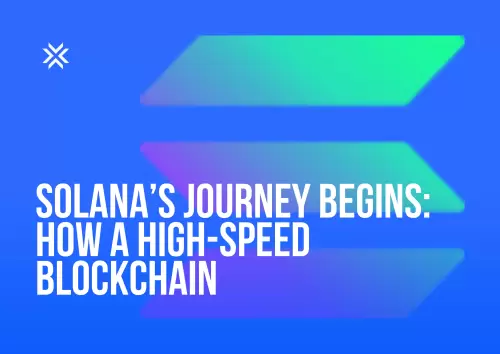 |
|
 |
|
 |
|
 |
|
 |
|
 |
|
 |
|
 |
|
 |
|
 |
|
 |
|
 |
|
 |
|
 |
|
 |
|
Cryptocurrency News Articles
Real World Assets (RWA): Riding the Blockchain Revolution Wave
Jun 26, 2025 at 10:00 pm
Dive into the tokenization of real-world assets (RWA) and its revolutionary impact on blockchain, with insights into market trends, key players, and future potential.

Real World Assets (RWA): Riding the Blockchain Revolution Wave
The tokenization of Real World Assets (RWA) is no longer a distant dream but a rapidly unfolding reality, poised to bridge the gap between traditional finance and the decentralized world. Experts predict the RWA market may reach $30 trillion by 2030, up from the current market share of $4 billion to $37.4 billion.
What are Real World Assets (RWA)?
RWA represent physical assets—think real estate, bonds, gold, art—tokenized on a blockchain. This digital representation allows for fractionalization, easier trading, and integration with DeFi protocols. It's about transforming closed, centralized financial systems into open, transparent, and global infrastructures.
Key Findings and Trends in the RWA Space
Recent reports highlight significant growth in the RWA market. The total value of tokenized real assets has exceeded $6.5 billion, marking a 72% increase since the end of 2024. Notably, a substantial 45% of these tokenized assets are actively used within DeFi protocols, demonstrating a genuine convergence of traditional and on-chain economies.
Ethereum remains the dominant blockchain for RWA, but alternative chains are gaining traction due to lower costs and improved scalability. The modularity of blockchain infrastructure is crucial for scaling tokenization efforts. Reliable oracles are also paramount, acting as 'layers of trust' by connecting off-chain assets to the on-chain world and ensuring data accuracy and security.
Institutional Giants and Emerging Players
Major institutions like BlackRock, JPMorgan (with Onyx), and HSBC are actively exploring tokenized bonds and bank stablecoins. This institutional interest underscores the legitimacy and potential of RWA. Alongside these giants, innovative protocols and companies are leading the charge. Also, projects with the highest social activity are $ONDO, $MKR, $ZBCN, $EL, and $SYRUP.
Emerging RWA projects like Keeta Network ($KTA) and Maple Finance ($SYRUP) are also making waves. Keeta, with its high transaction throughput, aims to revolutionize PayFi. Maple Finance is innovating in institutional lending with its undercollateralized loan approach.
Challenges and Future Outlook
Despite the excitement, the RWA sector faces challenges, including regulatory uncertainties, the need for standardization, and ensuring the security and transparency of tokenized assets. Looking ahead, the tokenized RWA market could exceed $20 billion by 2026, representing a significant portion of DeFi's overall Total Value Locked (TVL). This growth hinges on overcoming current challenges and fostering greater adoption.
A Personal Take
The rise of RWA isn't just about digitizing assets; it's about democratizing access to investment opportunities and creating a more efficient and transparent financial system. I think that with giants like BlackRock now wading into the pool, it feels like RWA are about to explode into the mainstream consciousness, kinda like how NFTs did a few years back.
The Bottom Line
The tokenization of real assets is more than just a trend; it's a financial revolution in full swing. With increasingly precise oracles, innovative protocols, and the entry of institutional players, RWA are rewriting the rules of global finance. Those who study, invest, and build in this field today are contributing to the birth of a new economic infrastructure. So buckle up, folks—the RWA revolution is here, and it's gonna be a wild ride!
Disclaimer:info@kdj.com
The information provided is not trading advice. kdj.com does not assume any responsibility for any investments made based on the information provided in this article. Cryptocurrencies are highly volatile and it is highly recommended that you invest with caution after thorough research!
If you believe that the content used on this website infringes your copyright, please contact us immediately (info@kdj.com) and we will delete it promptly.




























































